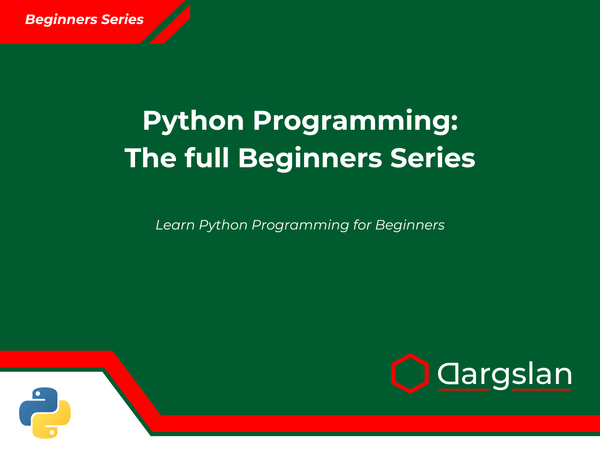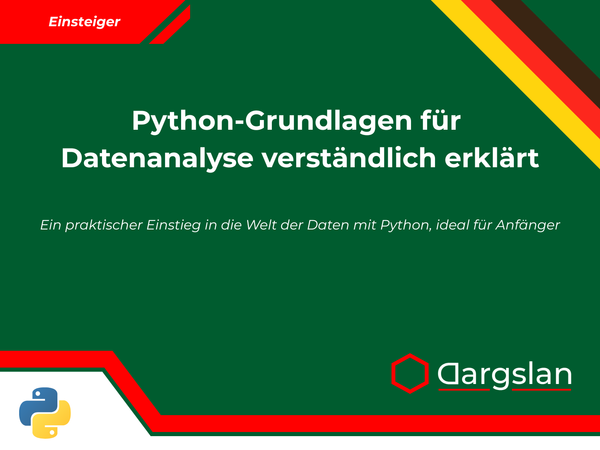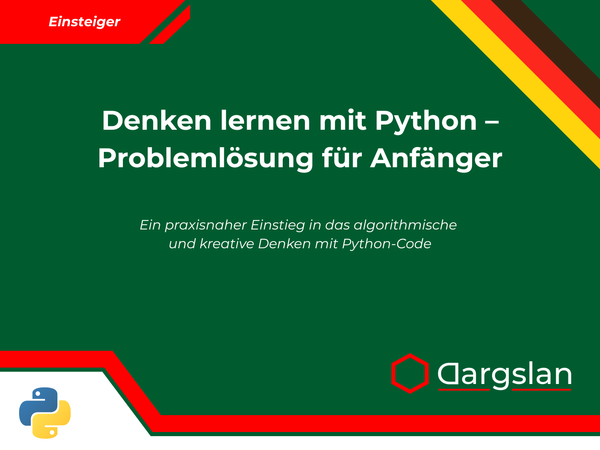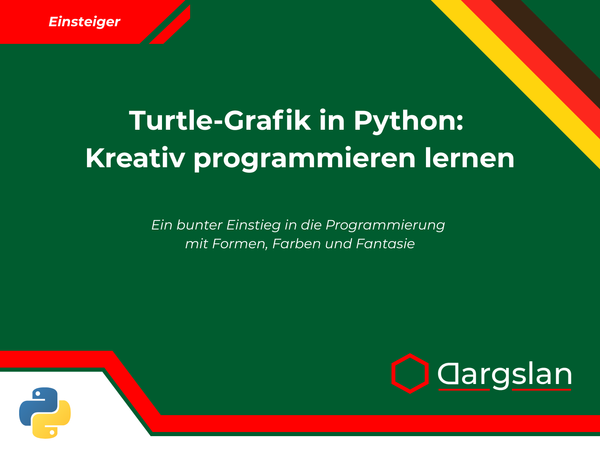Book Review: Writing Your First Python Script
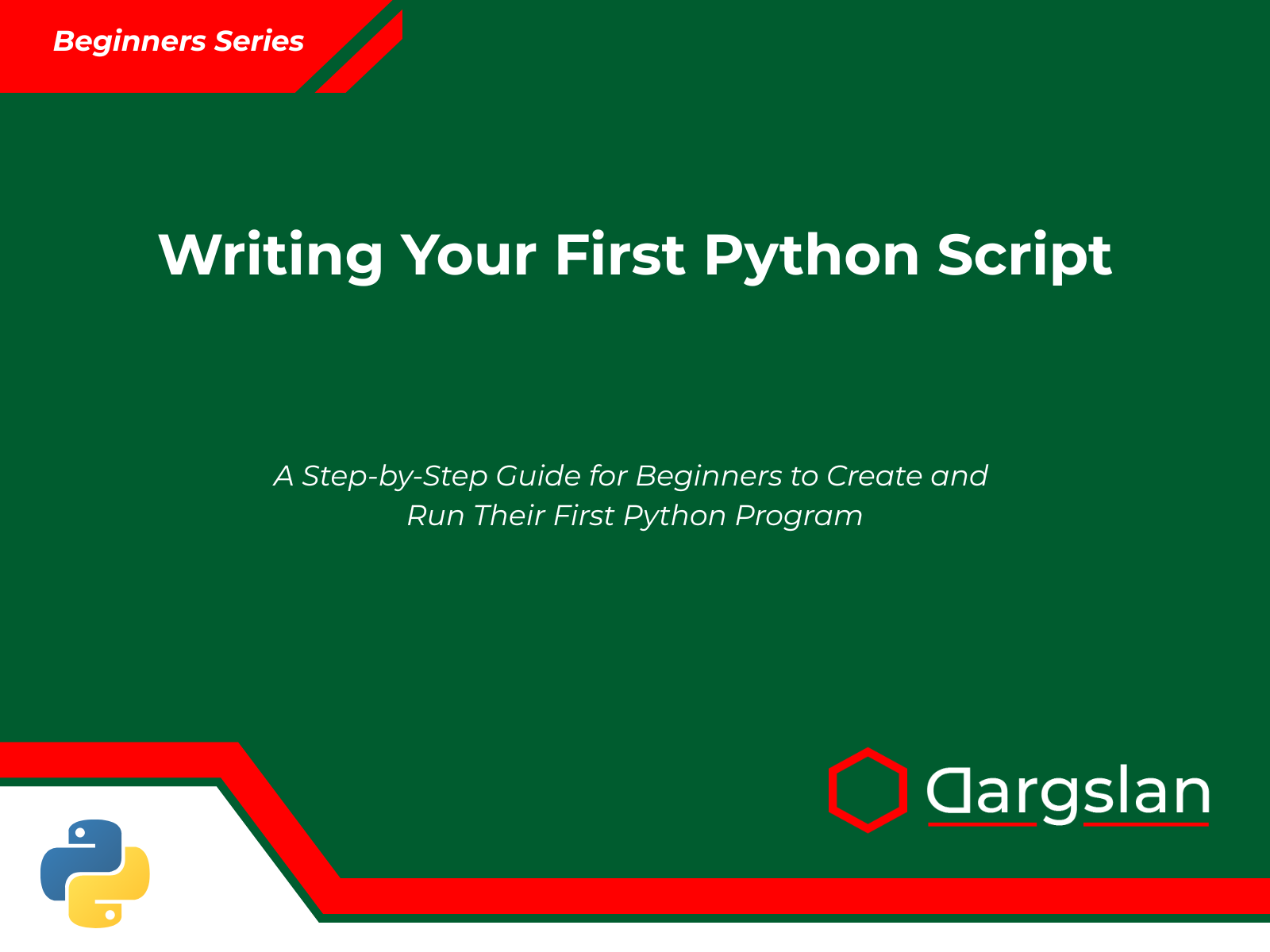

Writing Your First Python Script
A Step-by-Step Guide for Beginners to Create and Run Their First Python Program
Comprehensive Review: "Writing Your First Python Script" - The Ultimate Beginner's Guide to Python Programming
Introduction: A Gateway to Python Programming Excellence
In today's technology-driven world, programming skills have become increasingly valuable across virtually every industry. Among the numerous programming languages available, Python has emerged as the clear frontrunner for beginners due to its readability, versatility, and powerful capabilities. "Writing Your First Python Script: A Step-by-Step Guide for Beginners to Create and Run Their First Python Program" by Dargslan stands as an exceptional entry point for aspiring programmers looking to harness the power of this versatile language.
This meticulously crafted guide takes readers on a carefully structured journey from absolute Python novice to confident script writer. With its clear progression, practical examples, and hands-on approach, this book fills a critical gap in the Python learning resource landscape by focusing specifically on the fundamental skill of script creation—a stepping stone that many other resources overlook in favor of broader language coverage.
Why Python Programming Matters in 2023
Before diving into the book's contents, it's worth understanding why Python has become the programming language of choice for beginners and professionals alike:
- Versatility: From web development (Django, Flask) to data science (Pandas, NumPy) to artificial intelligence (TensorFlow, PyTorch), Python powers countless applications
- Career opportunities: Python developers command impressive salaries, with average compensation exceeding $120,000 in many markets
- Accessibility: Python's syntax prioritizes readability and simplicity, making it ideal for newcomers to programming
- Community support: With millions of developers worldwide, Python boasts one of the largest and most helpful communities in tech
- Future relevance: As automation, data analysis, and AI continue growing, Python's importance in the tech ecosystem only increases
Within this context, "Writing Your First Python Script" serves as the perfect foundation for anyone looking to capitalize on these opportunities.
Book Structure: A Logical Progression for Optimal Learning
One of the most impressive aspects of this guide is its thoughtfully designed structure. The author has created a learning pathway that builds knowledge incrementally, ensuring readers never feel overwhelmed while steadily advancing their Python capabilities.
Chapter 1: What Is a Python Script?
The journey begins with a critical foundation—understanding what exactly constitutes a Python script. Rather than jumping directly into syntax, the author wisely provides context about:
- The difference between scripts and programs
- How Python interprets and executes code
- Real-world applications of Python scripts
- The Python philosophy and community standards
This contextual introduction helps readers understand not just the "how" but the "why" of Python scripting, establishing a purpose-driven learning mindset from the outset.
Chapter 2: Setting Up Your Environment
Many programming books falter by assuming readers can magically configure their development environment. "Writing Your First Python Script" excels by providing detailed, operating system-specific instructions for:
- Installing Python across Windows, macOS, and Linux
- Configuring PATH variables for command-line access
- Setting up code editors and IDEs with recommendations for beginners (VS Code, PyCharm)
- Verifying installations and troubleshooting common setup issues
The step-by-step approach with screenshots eliminates a major barrier to entry that often discourages programming newcomers.
Chapter 3: Your First Lines of Code
With the environment ready, readers write their first Python statements. This chapter covers:
- The classic "Hello, World!" program with explanations of each component
- Running scripts from both the command line and within an IDE
- Understanding basic syntax including statements, indentation, and comments
- Python's interactive mode for experimentation
By ensuring early success, the author builds reader confidence—a crucial factor in programming education that too many resources overlook.
Chapters 4-5: Variables and User Input
These chapters form the foundation of interactive programming by introducing:
- Variable types (strings, integers, floats, booleans)
- Variable naming conventions and best practices
- String formatting and manipulation
- The
input()function for collecting user data - Type conversion and validation
The author excels at connecting these concepts to practical applications, showing how even simple scripts can solve real-world problems.
Chapters 6-7: Logic and Loops
As the complexity increases, the book maintains its accessibility while introducing powerful concepts:
- Conditional statements (if/elif/else)
- Comparison and logical operators
- While loops for condition-based repetition
- For loops for iterating through collections
- Control flow with break and continue statements
Each concept includes multiple examples that progress from simple illustrations to practical implementations, reinforcing learning through application.
Chapters 8-10: Advanced Concepts and Future Growth
The final three chapters elevate the reader's capabilities by:
- Introducing functions for code organization and reusability
- Implementing file operations for data persistence
- Providing debugging techniques and error handling strategies
- Outlining pathways for continued learning and development
Particularly valuable is Chapter 10's roadmap for growth, which outlines logical next steps based on various interest areas (web development, data science, etc.), preventing the common "now what?" question that plagues many programming beginners.
Appendices: Supplemental Resources for Continued Success
The four appendices provide exceptional value beyond the main content:
- A Python syntax cheat sheet for quick reference
- Keyboard shortcuts for popular editors to boost productivity
- Beginner-friendly project ideas with difficulty ratings
- An extensive FAQ addressing common challenges and questions
These resources extend the book's utility well beyond the initial reading, serving as ongoing references during the reader's Python journey.
Pedagogical Approach: Learning by Doing
What distinguishes "Writing Your First Python Script" from countless other programming books is its commitment to active learning. Rather than overwhelming readers with theory before application, each concept is immediately reinforced through:
- Conceptual explanation: Clear, jargon-free descriptions of programming concepts
- Practical demonstration: Concrete examples showing the concept in action
- Guided implementation: Step-by-step instructions for readers to follow along
- Creative challenges: Open-ended exercises that encourage experimentation
- Solution review: Sample solutions with explanations of different approaches
This multi-faceted approach accommodates diverse learning styles while ensuring concepts are thoroughly understood before moving forward.
Target Audience: Truly Accessible for Absolute Beginners
While many programming books claim to target beginners, they often make assumptions about prior knowledge that leave newcomers frustrated. "Writing Your First Python Script" delivers on its promise of true accessibility by:
- Assuming no prior programming experience
- Explaining technical terminology as it's introduced
- Providing analogies that relate programming concepts to everyday experiences
- Anticipating common misconceptions and addressing them proactively
- Maintaining an encouraging tone that normalizes the learning challenges
This approach makes Python accessible to diverse audiences, including:
- Students exploring programming for the first time
- Career-changers seeking entry into technical fields
- Professionals looking to automate routine tasks
- Hobbyists interested in creating practical tools
- Educators teaching introductory programming courses
Practical Applications: Connecting Learning to Real-World Value
Throughout the book, Dargslan connects Python concepts to practical applications, helping readers understand the relevance of their new skills. Examples include:
- Automating file organization and renaming
- Creating simple calculators and conversion tools
- Building text-based games and interactive stories
- Scraping websites for useful information
- Analyzing personal data for insights
By emphasizing practical utility, the book keeps readers motivated while providing templates they can adapt for their own projects.
Visual Learning Elements: Enhanced Understanding Through Illustration
Programming concepts can be abstract, but "Writing Your First Python Script" uses visual elements effectively to enhance comprehension:
- Syntax highlighting that matches popular IDE color schemes
- Flowcharts illustrating program logic and execution paths
- Comparison tables for related concepts (like different loop types)
- Iconography that visually distinguishes tips, warnings, and best practices
- Console output examples showing expected results
These visual components support different learning styles and reinforce key concepts beyond what text alone could accomplish.
Modern Python Practices: Future-Proofing Your Skills
A common pitfall in programming education is teaching outdated methods that require unlearning later. This guide avoids that trap by emphasizing contemporary Python practices:
- Using Python 3.x throughout (no legacy Python 2.x code)
- Following PEP 8 style guidelines for readable, maintainable code
- Implementing f-strings for modern string formatting
- Utilizing context managers for resource handling
- Encouraging type hinting for code clarity
These modern approaches ensure readers develop habits that align with industry standards and best practices.
Comparative Analysis: How This Book Stands Apart
The Python learning resource market is crowded, but "Writing Your First Python Script" distinguishes itself in several important ways:
| Feature | This Book | Typical Python Books | Online Tutorials |
|---|---|---|---|
| Focus | Laser-focused on script creation skills | Broader language coverage that can overwhelm | Often too narrow or too scattered |
| Progression | Carefully structured learning path | Sometimes jumps in complexity too quickly | Frequently lack coherent structure |
| Prerequisites | Truly assumes zero programming knowledge | Often require unstated background knowledge | Varying assumptions about prior experience |
| Hands-on Practice | Integrated exercises with guidance | Exercises often separated from concepts | Inconsistent practice opportunities |
| Setup Guidance | Detailed environment configuration instructions | Often cursory setup information | Frequently assumes environment is ready |
| Future Direction | Clear pathways for continued learning | May end without growth guidance | Rarely offer comprehensive next steps |
This comparative advantage makes "Writing Your First Python Script" the ideal starting point for true beginners while providing sufficient depth to serve as a foundation for more advanced Python learning.
Learning Outcomes: Skills You'll Develop
By the time readers complete this guide, they will have developed a comprehensive foundation in Python scripting, including the ability to:
- Create, save, and execute Python scripts using both command line and IDE environments
- Implement fundamental programming concepts including variables, conditionals, and loops
- Collect and process user input for interactive applications
- Debug common programming errors using systematic troubleshooting techniques
- Design basic algorithms to solve straightforward problems
- Implement file operations for data persistence and management
- Structure code using functions for better organization and reusability
- Apply Python to practical tasks relevant to professional and personal needs
These outcomes represent not just knowledge but practical capabilities that can be immediately applied to real-world scenarios.
Community and Support: Learning Beyond the Book
Recognizing that learning programming is a journey, not a destination, the author provides numerous pathways for continued growth and community engagement:
- Curated links to Python community resources (forums, Discord servers, meetups)
- Guidance for finding and working through open-source projects
- Recommendations for complementary learning resources by subject area
- Tips for building a programming portfolio
- Strategies for overcoming common learning plateaus
This community-minded approach helps readers transition from isolated learning to participation in the broader Python ecosystem.
Strengths: What the Book Does Exceptionally Well
After thorough analysis, several strengths emerge that make "Writing Your First Python Script" particularly valuable:
1. Exceptional Clarity of Explanation
Complex programming concepts are distilled into understandable explanations without oversimplification. The author has a remarkable talent for identifying potential confusion points and addressing them proactively.
2. Thoughtful Progression of Concepts
Each new idea builds naturally upon previously established knowledge, creating a seamless learning experience where readers feel challenged but never overwhelmed.
3. Practical Focus on Script Creation
By concentrating specifically on script creation rather than language theory, the book provides immediately applicable skills rather than abstract knowledge.
4. Comprehensive Troubleshooting Guidance
The debugging chapter and FAQs address the frustration point that causes many beginners to abandon programming, providing strategies for independent problem-solving.
5. Emphasis on Good Habits From the Start
Rather than teaching shortcuts that create bad habits, the book establishes professional practices from the beginning, eliminating the need to unlearn problematic approaches later.
Areas for Potential Enhancement
While "Writing Your First Python Script" excels in most areas, a few aspects could be enhanced in future editions:
1. More Diverse Project Examples
Additional examples from fields like data visualization, web applications, or scientific computing would illustrate Python's versatility across domains.
2. Interactive Digital Components
Complementary online exercises, code playgrounds, or video demonstrations would enhance the learning experience for digital-first learners.
3. Expanded Coverage of Python Packages
A more detailed introduction to Python's package ecosystem and pip usage would help readers leverage existing tools more effectively.
These suggestions represent refinements to an already excellent resource rather than significant shortcomings.
Who Should Read This Book?
"Writing Your First Python Script" is ideal for:
- Complete programming newcomers seeking a gentle but thorough introduction
- STEM students needing to develop Python skills for coursework or research
- Professionals in non-technical fields looking to automate repetitive tasks
- Teachers and trainers seeking a structured curriculum for Python instruction
- Self-directed learners who prefer a systematic approach to programming education
- Casual enthusiasts curious about how programming works
- Parents guiding children's early programming experiences
The book's accessibility makes it appropriate for readers as young as middle school students (with some guidance) while providing sufficient substance for adult learners.
Final Verdict: An Essential Resource for Python Beginners
"Writing Your First Python Script: A Step-by-Step Guide for Beginners to Create and Run Their First Python Program" earns our highest recommendation as an exceptional entry point to Python programming. With its thoughtful structure, clear explanations, and practical focus, it transforms the potentially intimidating process of learning to code into an accessible and enjoyable journey.
What sets this book apart is its rare combination of true beginner accessibility and genuine depth—providing not just surface-level knowledge but a robust foundation for Python proficiency. The author's expertise is evident not just in understanding Python itself, but in understanding how people learn programming most effectively.
For anyone taking their first steps into Python programming, this guide represents the ideal starting point—a compass and map for a rewarding journey into one of today's most valuable technical skills.
Key Takeaways
- Exceptional introduction to Python scripting for absolute beginners
- Practical, hands-on approach with immediate application of concepts
- Carefully structured progression that builds confidence and competence
- Modern Python practices that align with industry standards
- Comprehensive troubleshooting guidance to overcome common challenges
- Clear pathways for continued learning beyond the book
Whether you're exploring programming out of curiosity, professional necessity, or academic requirements, "Writing Your First Python Script" provides the solid foundation you need to begin your Python journey with confidence and clarity.

Writing Your First Python Script



